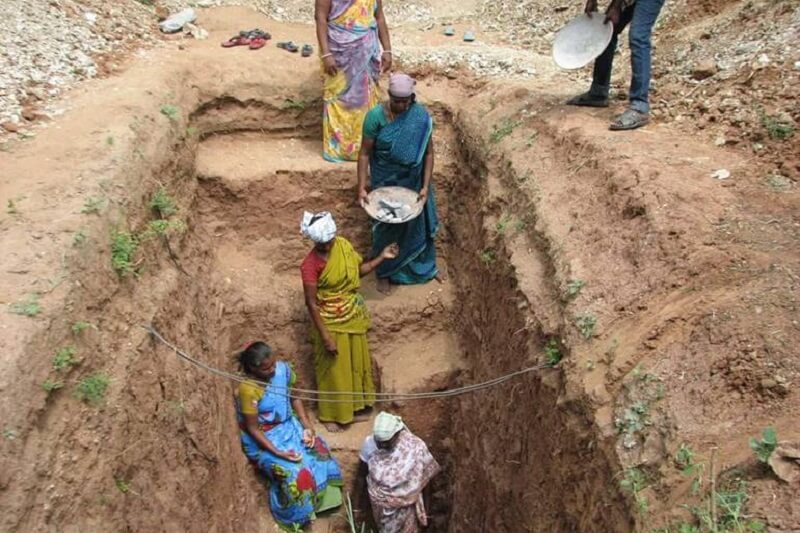In Tamil Nadu’s drought-struck Vellore district, a group of 20,000 women worked for four years to save the Naganadhi river. The river had been dead for 15 years
A significant share of the Indian subcontinent has been dealing with droughts and a serious drinking water scarcity.
24 districts in the state of Tamil Nadu alone were overpowered by droughts. In the district of Vellore, however, 20,000 women took it upon themselves to put an end to the suffering.
Over a period of four years, thousands of women worked together to resuscitate Vellore’s primary water source, the Naganadhi river.
Reviving the Naganadhi was made possible by building 3500 recharge wells. Furthermore, several boulder checks were created to slow down the flow of rainwater.
Recharge wells help sustain groundwater levels, as rainwater is rerouted to shallow aquifers.
Over the last decade, with the lapse of agriculture amid the long-standing drought, the men of Vellore have migrated to cities.
The 20,000-strong group of women, who saved the Naganadhi, comprised those left behind.
Initiated under the Art of Living Foundation’s Naganadhi Rejuvenation Project, assisted by the Centre, and strengthened by the women of Vellore, the revival began in 2014.
Government approval of the project allowed women to register as MGNREGA workers. This, in turn, ensured daily wage labour for the women.
In 2018, the women got the Naganadhi to flow again, producing sufficient drinking water and irrigation water in the drought-struck region.
Earlier, the seasonal river had been dead for 15 years. Director of the Naganadhi Rejuvenation Project, Chandrasekaran Kuppan affirmed, “A river flows above the surface only after the groundwater has been replenished. Therefore, reviving a river isn’t just about its flow, but getting enough water to seep into the ground. In other words, letting rainwater infiltrate the soil by slowing it down. Once it rains this year, the river will be in full spate.”
Also read: http://diplomacybeyond.com/monsoon-session-of-parliament-begins-from-18-june/









